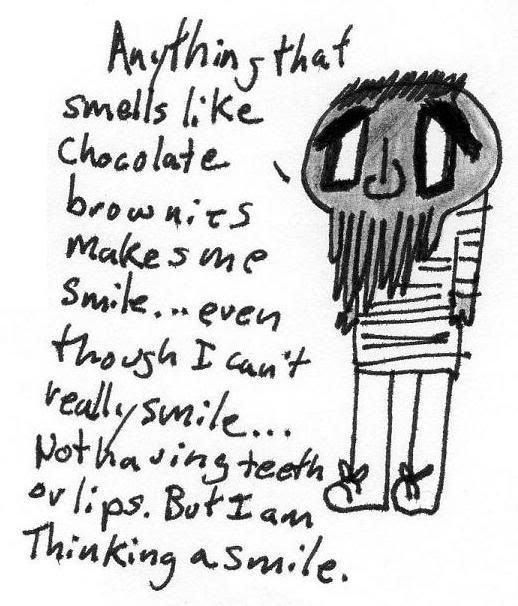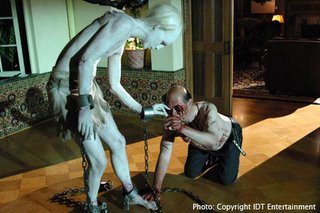What's Happening? (6/20/08)
So I used to be a M. Night Shyamalan fan.
This is my lil' ole review of his new film The Happening, in theaters now, and more so why I think M. Night is a hack.
BEFORE YOU GO ANY FURTHER JUST BE AWARE THAT I AM GOING TO TOTALLY RUIN THIS ENTIRE MOVIE AND PROBABLY MAKE YOU FEEL BAD FOR EVEN WANTING TO SEE IT!
I have enough journalistic integrity to actually sit and watch a movie I know I won't like before I critique it instead of writing something based on presumption and what I have heard from other people, but not enough journalistic integrity to actually pay for it.
When I started hearing about The Happening I do have to admit I was interested to a certain extent. The idea of mass suicides with no apparent explanation is admittedly a very scary thought, but it is not an original idea.
Jisatsu Saakuru (Suicide Club or Suicide Circle in English) is a film by Sion Sono, originally released in the US in 2002. A film that I stumbled upon in 2004 and immediately adored. Sharp, sadistic and in the end a real jewel of Japanese cinema, it was the first thought that popped in my head when I heard that M. Night was making a mass suicide based thriller.
So that is -10 points for unoriginality.
But I still admit I was curious.
Then the TV ads started coming out, most of them with the tag "His First R Rated Film".
I was sort of disgusted by this ploy to sensationalize his film by slapping on a R rating.
And the commercials obviously showed a lot of this mayhem and horror, people jumping off buildings, dead bodies in the streets, people about to stab themselves with blunt objects. Yeah ok, so blunt objects, in the movie there is a woman who takes out of her hair one of those chopstick hair stick thingies with the intent of stabbing herself in the jugular, but when she takes it out of her hair it is like this steel spike stiletto thing. WTF lady? Why did you have that in your hair in the first place?

I watched the entire movie, and I am telling you all, it did not need an R rating.
By today's film standards probably a PG-13, but no way an R. And maybe you think I am jaded or that because I have seen more graphic horror that I think this film is a light weight, but there seriously was nothing constituting an R rating by today's standards. I even tried to get a hold of the MPAA to ask if a director can ask for a more severe rating than needed. I do believe this is allowed, and really is the only explanation. None of the suicides shown were that horrific or gruesome. There was barely any blood. I cannot find any reason that this film should be categorized as R rated. The most bloody/graphic of all the suicides was actually more ridiculous and cartoonish than anything else.
In one scene a member of the group that Mark Wahlberg is in at the time gets a video message on their phone from someone they know at a zoo. The video shows a man in the lion den holding his arms out to a lioness presumably trying to get her to eat him. The lioness goes for the arm and rips it off at the shoulder. The man then offers the other arm to another lioness which then rips that arm off at the shoulder. Now my response to this scene? LIONS AND ARMS DO NOT WORK THAT WAY!!!
A. Lions don't rip limbs off of live prey. They would have jumped on the guy and chomped on his windpipe, but would not have torn his arms off.
B. What the hell was this guy made out of, papier maché? For god's sake people, the human body is a little bit stronger than that. His arms wouldn't have come off, he would have been pulled to the ground. And don't give me any bull about how the lion ripping in one direction and the guy pulling his own body in another would have been enough to rip his arm clean off. It may have dislocated his shoulder but his freaking arm wouldn't have come off. I mean seriously, people, it looked like something from Monty Python.

Sorry I am skipping around a lot here. Anyway. So the movie starts off with the most pretentious 5 minutes of any movie I have ever seen, and I have watched a lot of Oliver Stone movies. Mark Wahlberg is a science teacher of some variety and is talking to his class about the recent phenomenon of disappearing bees.
So he asks his class to give their ideas as to why they think this could be happening. The first says disease, which Wahlberg basically shrugs off as not likely. The second student says pollution, to which Wahlberg responds with, "We're just pumping so much stuff into the environment that they are just keeling over." The third student offers up the obvious follow up of global warming which Wahlberg responds to with "Temperature goes up a fraction of a degree, they get disoriented, maybe." Then the final student comes up with this gem, "an act of nature and we'll never fully understand it," to which Wahlberg replies "Nice answer Jake!" I hate Jake and his answer BTW, "He's right, I mean, science will come up with some reason to put in the books but in the end it will be just a theory. We will fail to acknowledge that there are forces at work beyond our understanding."
WHAT? What the hell kind of science class is this? The answer that isn't a real answer is the right answer? Come on now. M. Night fails at science.
My synopsis of the rest of the movie...
A lot of really one dimensional characters, which is admittedly very out of the ordinary for M. Night, who usually makes his characters very believable. With this film I didn't believe anything coming out of any character's mouth, all the acting was total ham sandwich, most importantly I didn't care what happened to anyone.
One of the most important things to being a good writer, especially in film, is being able to show the story instead of tell the story. Don't have your characters come over to the camera and say "I am scared" or "I am angry." Show their emotions through what is happening in the story.

There is one part in which Zooey Deschanel is trying to comfort John Leguizamo's daughter, who is being very shy, and Zooey Deschanel says to the little girl, "I don't like to show my emotions either." Ok, a few different problems with this. A: People who have problems showing their emotions don't just bluntly state that they have this problem, especially in large groups of people and even more especially not in front of their spouses whom they do not show their emotions to. It was just, as I said, telling instead of showing. M. Night wanted us to know this little fun fact about that character so he didn't have to take the time to actually show it in a more developed way. B: If an adult was going to say something like that to a child, they would most likely use the word feelings instead of emotions. There was something going on in this film where the language just wasn't quite right. There were a lot of lines that just didn't seem very natural coming out of the actor's mouths. These sentences may have looked better on paper, but just didn't translate the same to actual speech.
Now going back for a moment to point A about Shyamalan telling the audience over showing the audience, I think this plays into another issue he has as a writer, which is underestimating the intelligence of the audience. All of his films have some element of this, but it seems to be getting worse as his career progresses. There are a lot of ideas in his films that he finds the need to shove in our faces that he would be much better off subtly hinting at, or even letting us as the audience come to our own conclusions about.
So now to the main reason I really disliked this movie, and of course it comes full circle to Shyamalan's whole environmentalist propaganda message.
The reason these people have been killing themselves without control?
Trees.
Well not just trees, but all plants. Plants that are somehow sentient enough to know that it is humanity that is causing the destruction of the environment and specifically target us with their evil suicide pheromones so that we will kill ourselves in horrible scary ways!!! OOOOOOOOOO...Spooky! Or maybe not.
Now I would just like to take a moment to state that I am definitely someone who believes that we are going through and even effecting a global climate change. However I think that it is kind of obnoxious and, excuse my French, up his own asshole or Shyamalan to put his opinions on the matter forth in this way. Honestly I think it even comes down to just being sloppy and obvious. I mean, yes, I understand that he is trying to make a statement about our effect on the environment in this film at large, the working title for the screenplay was even "The Green Effect," but there are better ways of putting your personal opinions forth. I think that most people who see this movie will be turned off at how obviously preachy about environmental issues it is.
But come on man, trees? really? is that the best you could come up with?
Suicide Club was so much better.
Now you get to meet Dennis De Los Muerto!



